Ecommerce Financial Model Excel Template
All-in-one financial planning tool in Excel. Feasibility study & budget for SaaS startups. Ready to present financial projections. No installation needed.
TEMPLATE DESCRIPTION
Choosing the right business model for your online business includes a lot of factors. And so, our Ecommerce Financial Model Excel Template will be highly useful for you to make your projections and budget planning for your startup.
In summary, using this file you can:
- Create financial projections for up to 10 years and test them using a range of assumptions;
- Test various business models: using market places, developing your own digital store, or combining both approaches;
- Account for conventional sale of goods and services, as well as for the sale of digital products using the subscription model;
- Take into account seasonal changes and year-to-year fluctuations of demand;
- Calculate and compare the projected performance of different lines of business, as well as market places with different fee schemes.
Simple, yet powerful, E-commerce Startup Financial Model in Excel offers a full range of the professional financial model tool.
Ecommerce & SaaS Financial Model Excel Template Features:
Basically, the file includes three main sections:
 Dashboard
Dashboard
Firstly, please start working from the Dashboard. Because, here you will find the links to all parts of the model, as well as the settings and assumptions section.
Model Config section allows you to:
- Set the length of the Projection Period (from 2 to 10 years) by picking a relevant value from the dropdown list;
- Enter the Start Date of the project;
- Enter a code of the currency in which all monetary amounts will be displayed;
- Show or hide instructions by selecting the respective value from the dropdown list.
Dashboard Tables in Financial Model Excel Template
There are several tables here as well:
- Sales Channels table where you can put a list of the sales channels by different market places, as well as by your own website. In Ecommerce business each sale channel requires specific percentage fee per sale, fixed fee per sale, fee per listing and fixed fee per month. Needless to say, your own website will have no associated fees;
- A list of Business Lines that serves to categorize sales of goods and services;
- Sales Trend table allows you to make assumptions about how sales will grow over the years as your digital brand gets customer recognition and loyalty.

Moreover, two tables at the bottom of the Dashboard enable you to create lists of products:
- Subscription table will contain a list of digital product using a subscription model. So, it allows you to designate base monthly prices, retention rates and variable cost to the products;
- Goods and Services table will contain a list of both physical goods and services using the conventional selling model.
Lastly, there are two sections allowing you to make sales projections:
- Sales Projections section will make sales projections for the conventional sale of both goods and services, and
- Subscription Projections sections to make projections of sales that use a subscription model. Also, you can select SaaS as a business line here.
Sales Projections
If you’re going to sell goods or services using conventional selling model, in Sales Projections section, fill in Sales table with the following information:
– Names of products; E-commerce business models are suitable for a wide range of products and services including:
- Physical products: clothing, shoes, home goods, etc.
- Digital products: software as a service, e-courses, e-books, etc.
- Services: consulting services, home cleaning, etc.
– Marketplaces (either third-parties or your own website): Not all marketplaces are equal though. Some charge higher percentage of sales as a commission. While others rely mostly on fixed monthly fees or on fee per listings, and yet others combine several fee schemes.
– For each month of the year, expected average number of products sold.
Furthermore, Sales Projections will be calculated automatically. Monthly sales numbers will be found as product of the month-specific expected average number and year-specific percentage trend value in the Dashboard of Ecommerce Financial Model.
If you expect that product prices will increase over time, enter a respective increase rate along with its frequency into Price Increase fields. Price Evolution table will contain actual prices adjusted for a time-related price increase.
Sales revenues from all products will be calculated along with respective marketplace commissions and variable costs (costs of goods and services sold).
Subscription Projections of an Ecommerce Financial Model
Again, if you intend to receive subscription revenue from digital products, in Subscription Projections sections fill in Acquired Subscriptions table. Besides, for each combination of the product and marketplace, you will input a number of subscriptions that you expect to obtain in respective months.
In general, the projections of lost and retained subscriptions will be ready automatically according to the assumptions that you have entered in the Dashboard.
You can adjust prices and cost of digital subscription products if you expect they will increase over time. Marketplaces normally charge commissions each time the sale occurs for products and services. However when it comes to digital subscription products in ecommerce business, only their initial subscription will involve marketplace commission per sale.

Also, subsequent recurring sales can occur outside of the marketplace, thus avoiding commission expense. However, a marketplace can charge a fee per listing payable irrespective of whether sales take place, or not, as long as digital products are listed on the platform.

Then, you will enter the expected salary and other fixed costs in the Fixed Costs section.
Fixed Costs
Equally important, start here from the Staff table. Enter names of employee positions. For employees whose jobs cannot be directly attributed to either business line, leave this field blank. Oy you may enter ‘Non-Specified’ item (to the same effect). It will allow you to calculate profit margins separately for each business line.

Other Monthly Expenses table follows the same logic: enter the names of expense items into the list, along with respective groups of income lines. Then enter expected monthly amounts of expenses for each projected month.

In particular, it is reasonable to expect that expenses will increase over time. For this reason, here you can enter the expected increase rates and frequencies into Salary Increase and Expenses Increase fields. Time-adjusted amounts of wages/salaries and other fixed expenses will be calculated for each month of the projected period in this ecommerce financial model template in Excel.

Startup Costs
Last, but not least step will be entering your startup costs into the respective section. The usefulness of the model will depend on the degree of accuracy in estimating the costs for your e-commerce business.
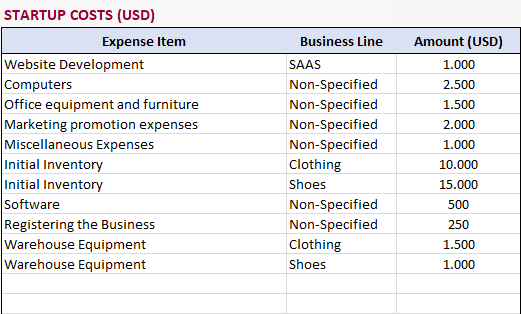
Report Outputs
Finally, as you have entered all necessary data, go to the reports which are available from the Dashboard section. The Ecommerce Financial Model contains the following reports:
- Financial statements (Monthly & Yearly) including Income statement, Balance sheet and also Cash flow statement;
- Profit (EBITDA) report presenting breakdowns of income and expenses by lines of income;
- Breakeven reports giving you an idea of when you are going to recover your initial investments;
- NPV&IRR Calculation, presenting estimations of important investment metrics;
- Net revenue report displaying revenues, after deducting market place commissions, for each product and business line;
- Moreover, another net revenue report by market places displaying revenues, after deducting market place commissions, for each product and market place;
- Sales breakdown report displaying, for each business line, expected numbers of products sold along with prices and gross revenue amounts;
- Furthermore, sales breakdown report by market places displaying, for each market place, expected numbers of products sold along with prices and gross revenue amounts;
Gross profit report for each income line, and overall;
- Firstly, gross profit breakdown report displaying, for each business line, profit margin after deducting the variable cost and fixed cost associated with the respective business line;
- Secondly, by market places displaying, for each market place, profit margin after deducting variable cost;
- Lastly, subscription breakdown reports showing numbers of acquired, lost and retained subscriptions.
Ecommerce Financial Model Features Summary:
- Perform financial study for Ecommerce and SaaS
- Works both on Mac and Windows
- No installation needed, ready to use.
- Professional design and ready to present
- Innovative reporting system
- Financial Statements
- On Sheet Instructions
- White Label
- Print-Ready
- Compatible with Excel 2010 and later versions
SOMEKA FINANCIAL MODELS COLLECTION
USER REVIEWS & COMMENTS
8 reviews for Ecommerce Financial Model Excel Template
You must be logged in to post a review.
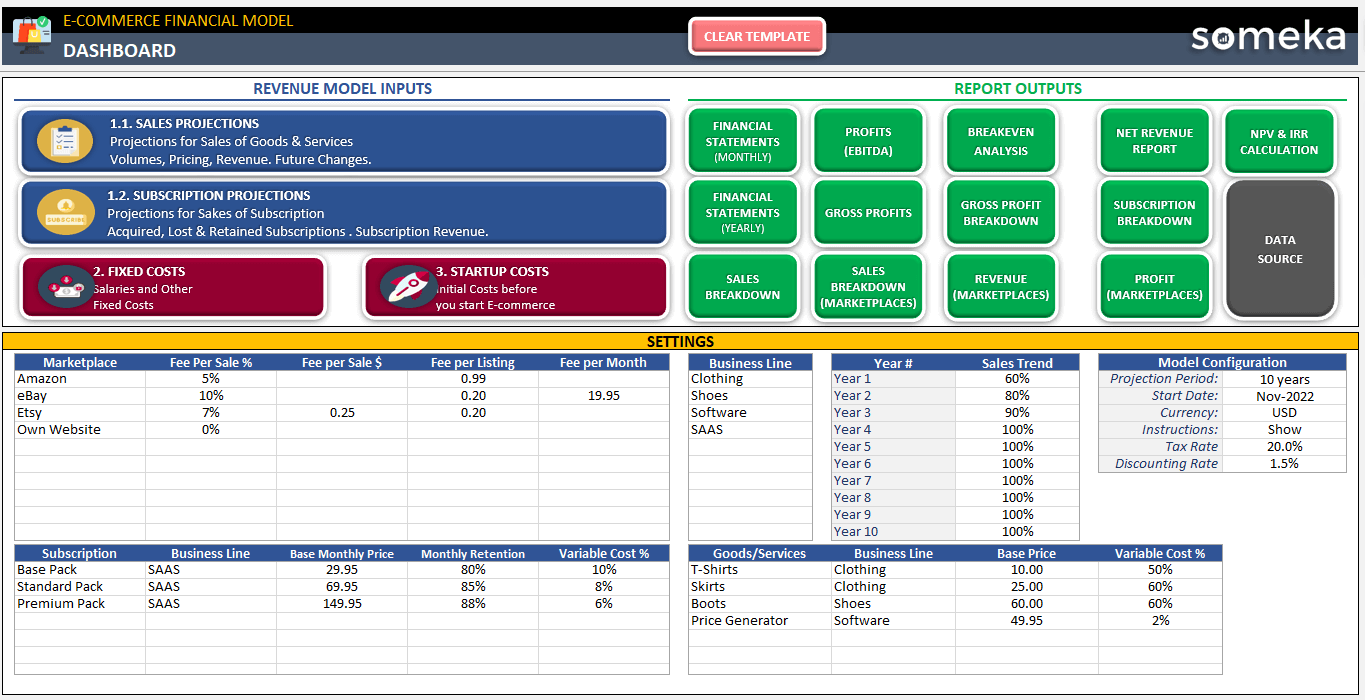
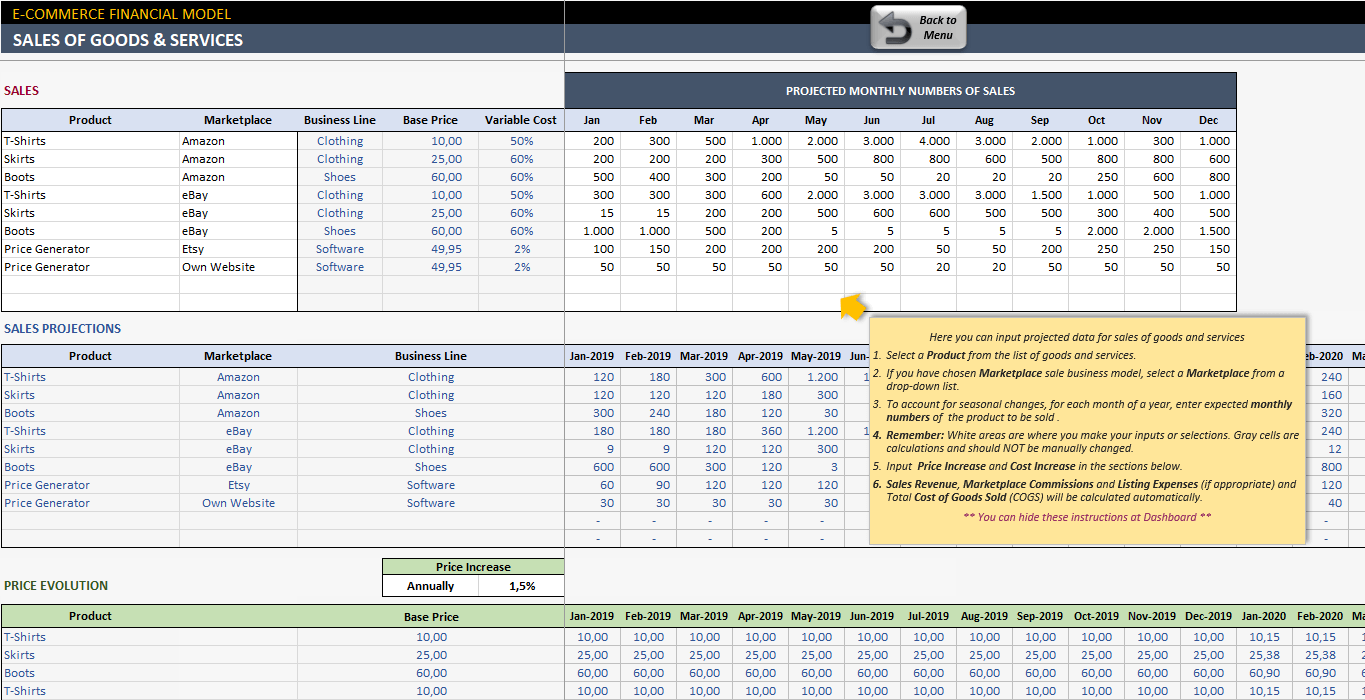
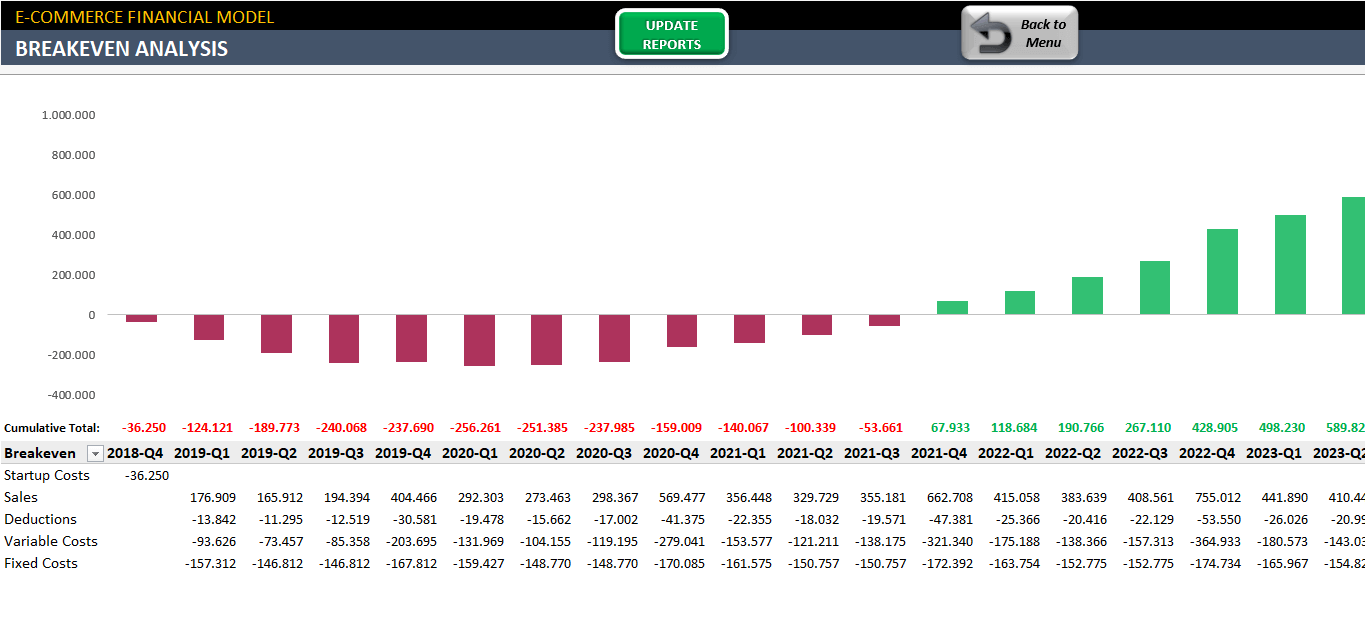
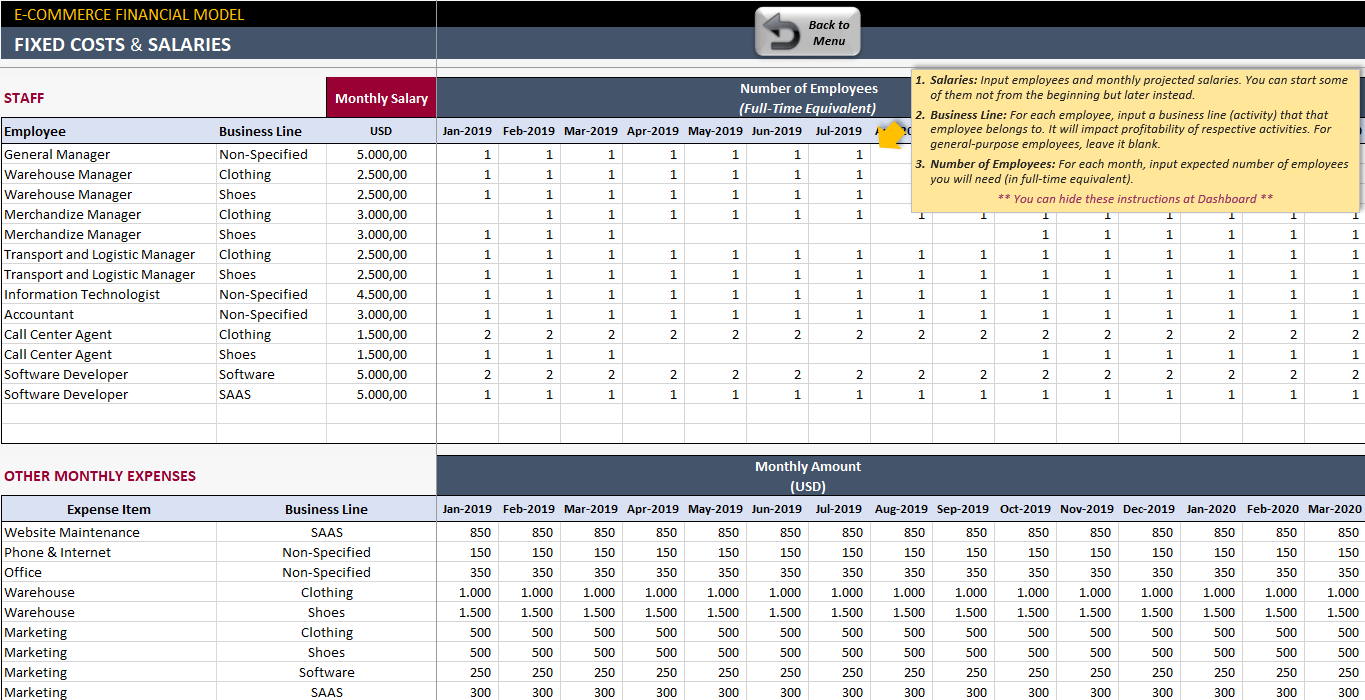
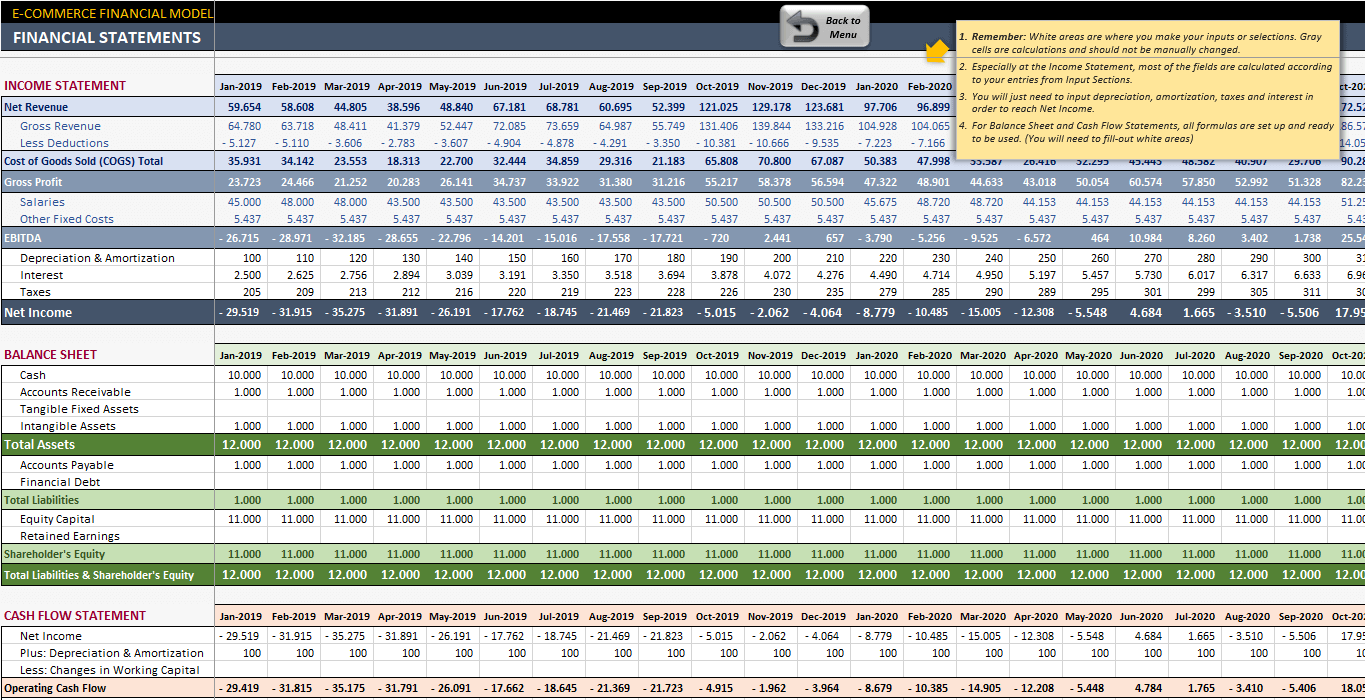
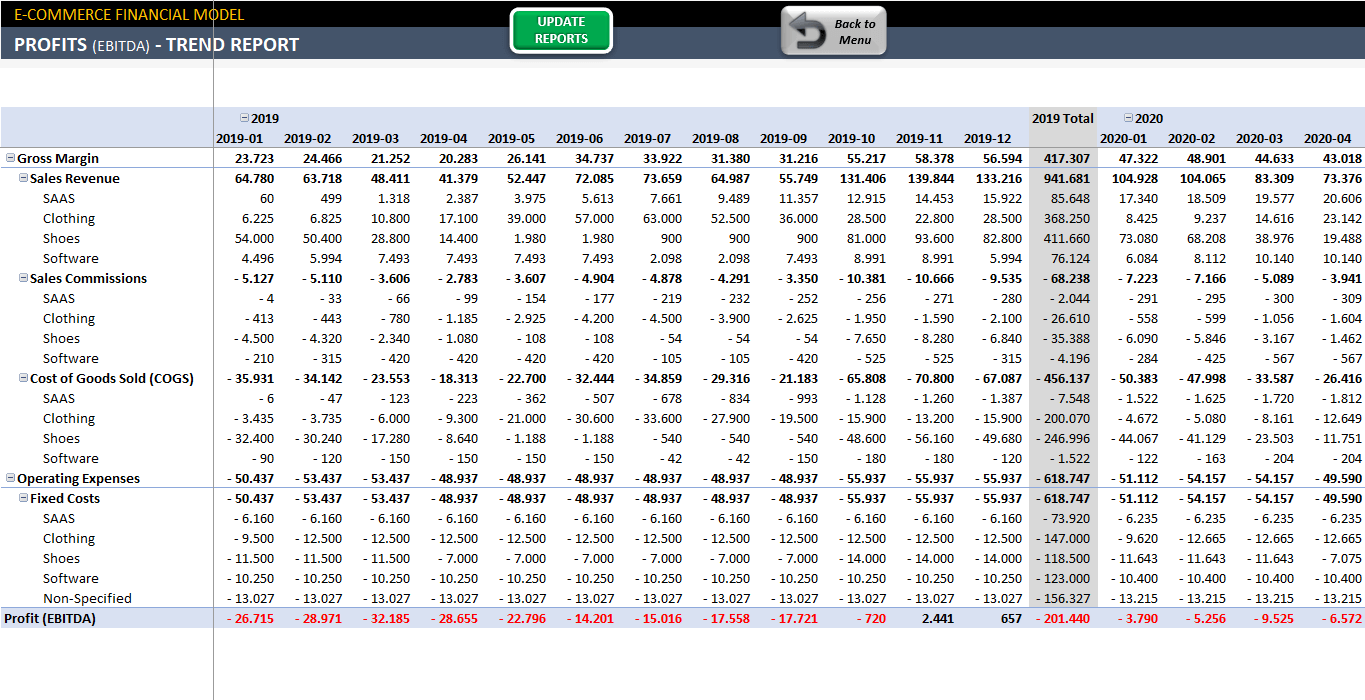
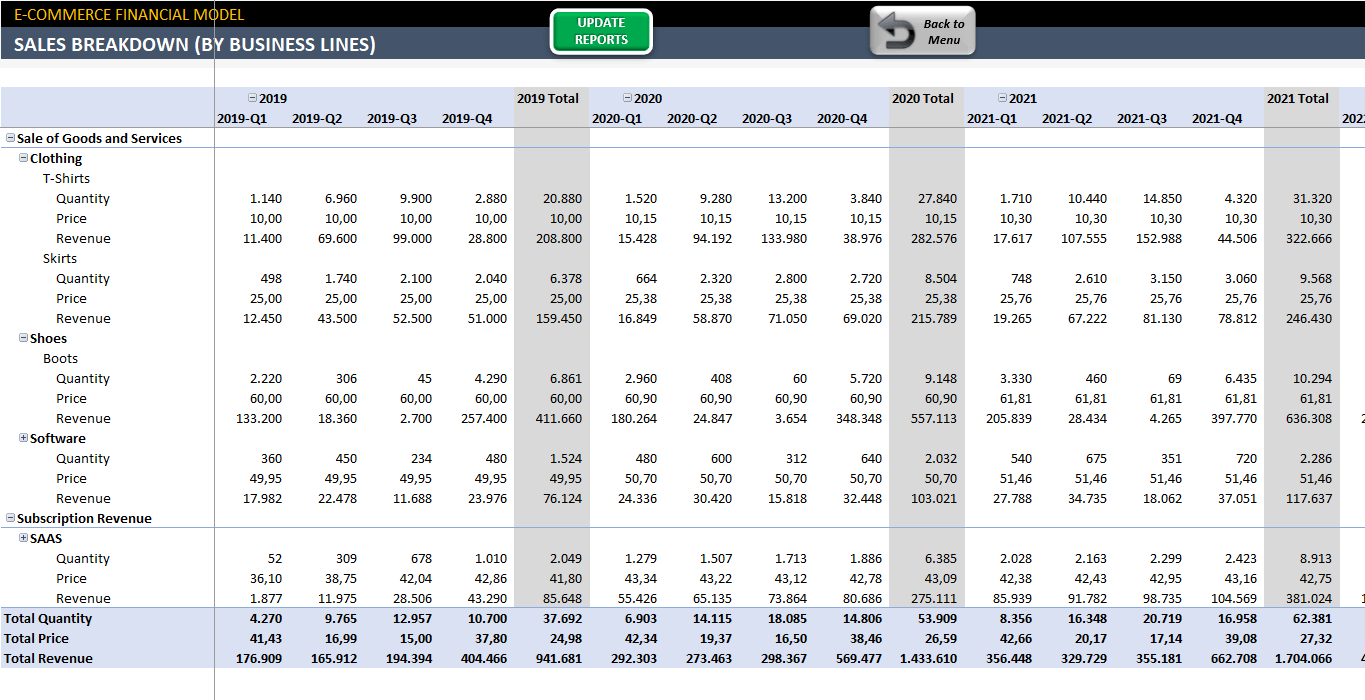
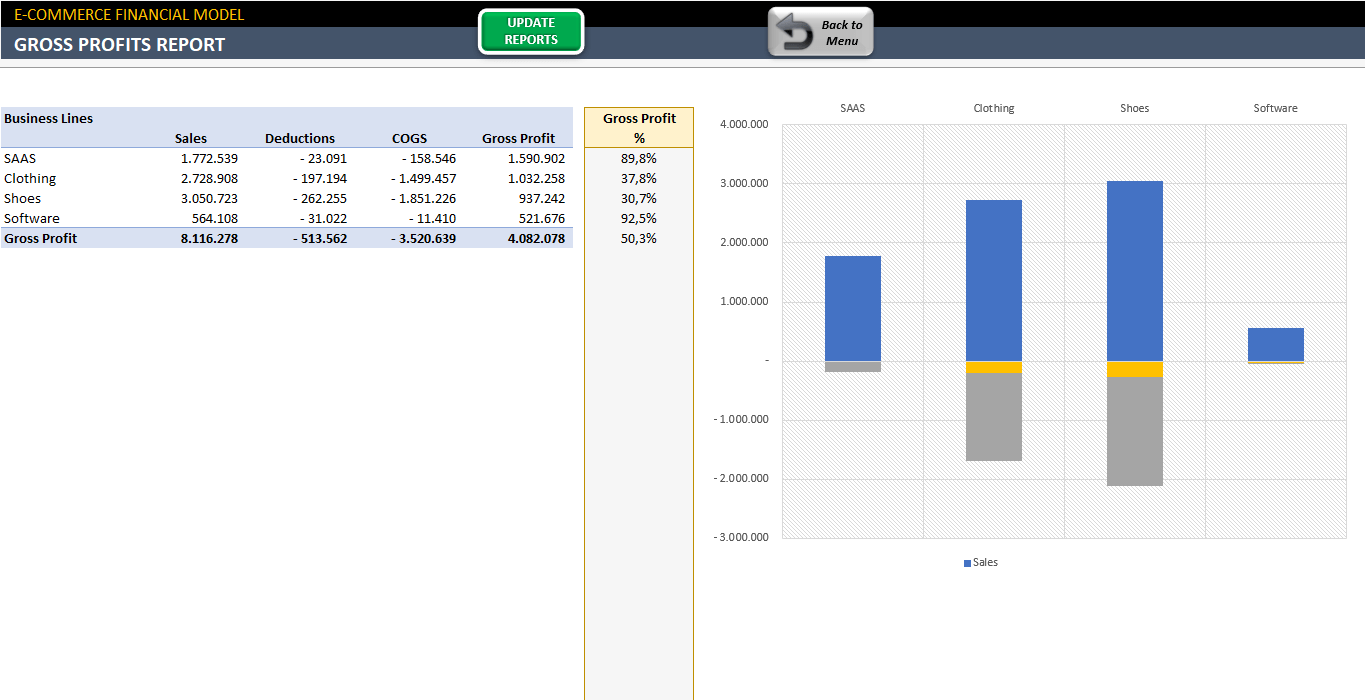
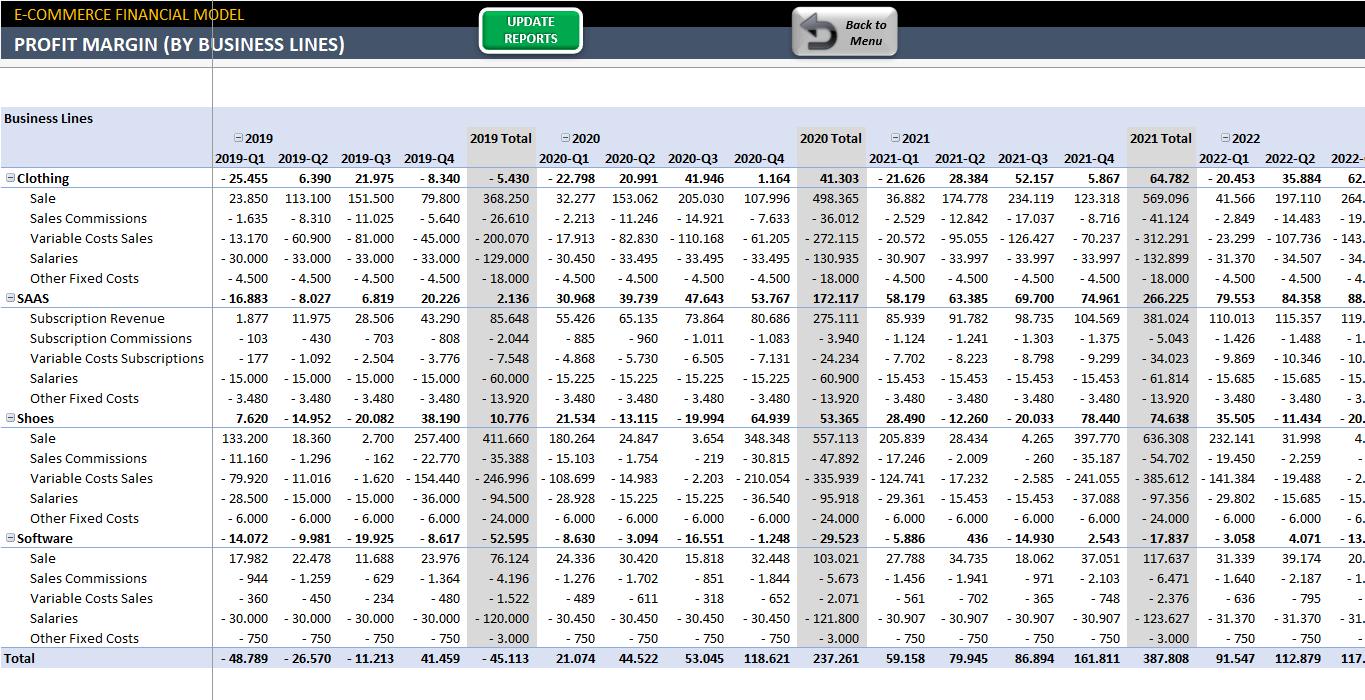
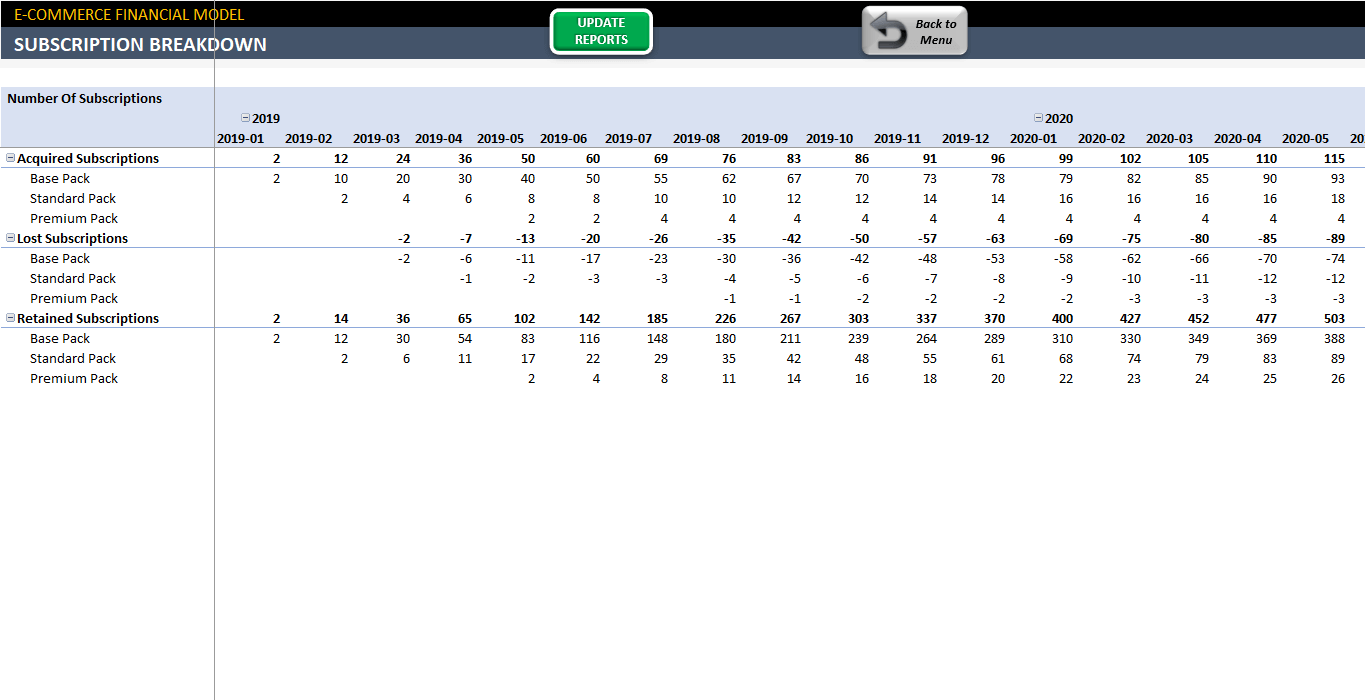
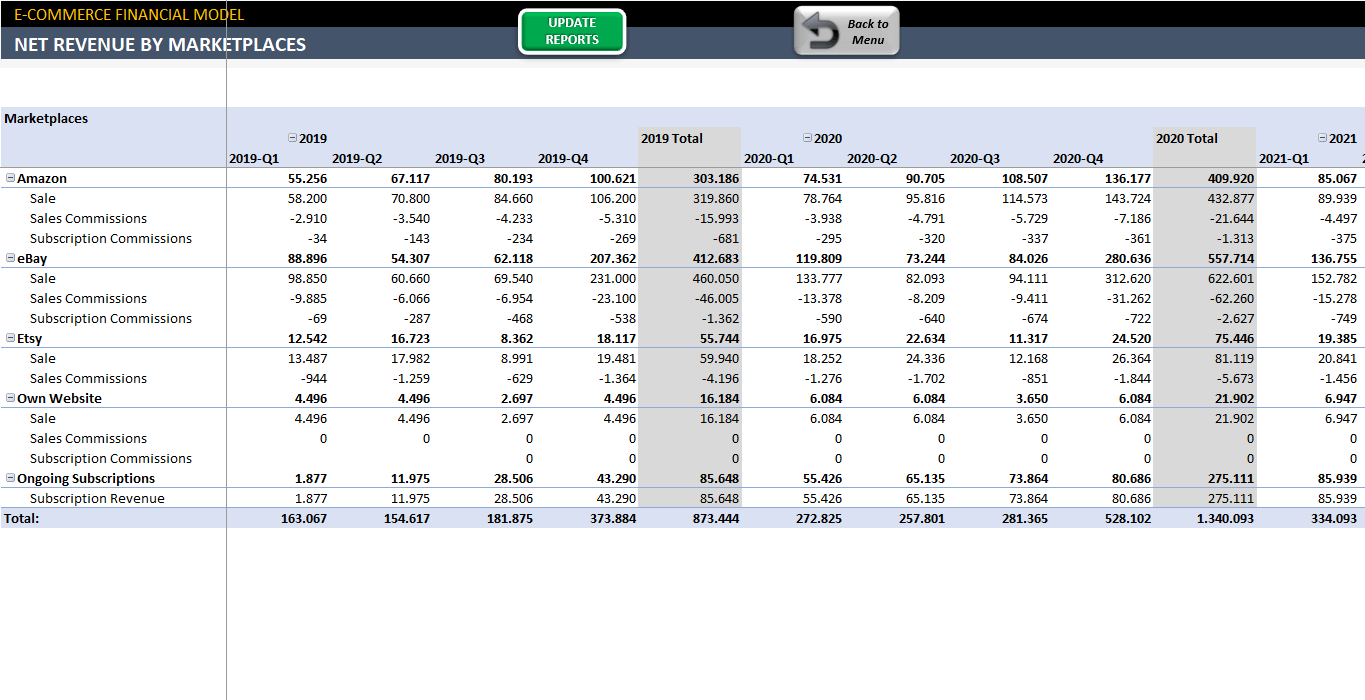
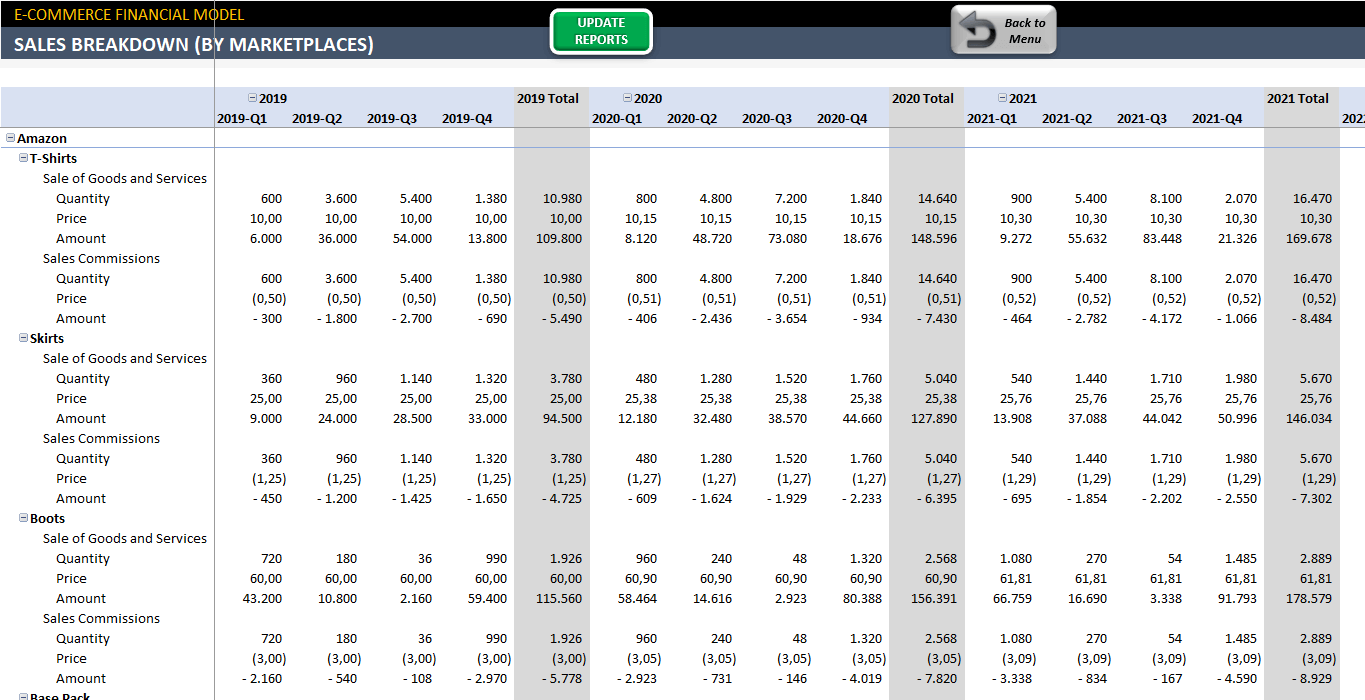
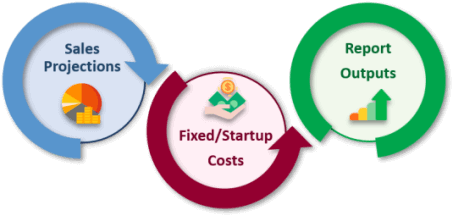 Dashboard
Dashboard




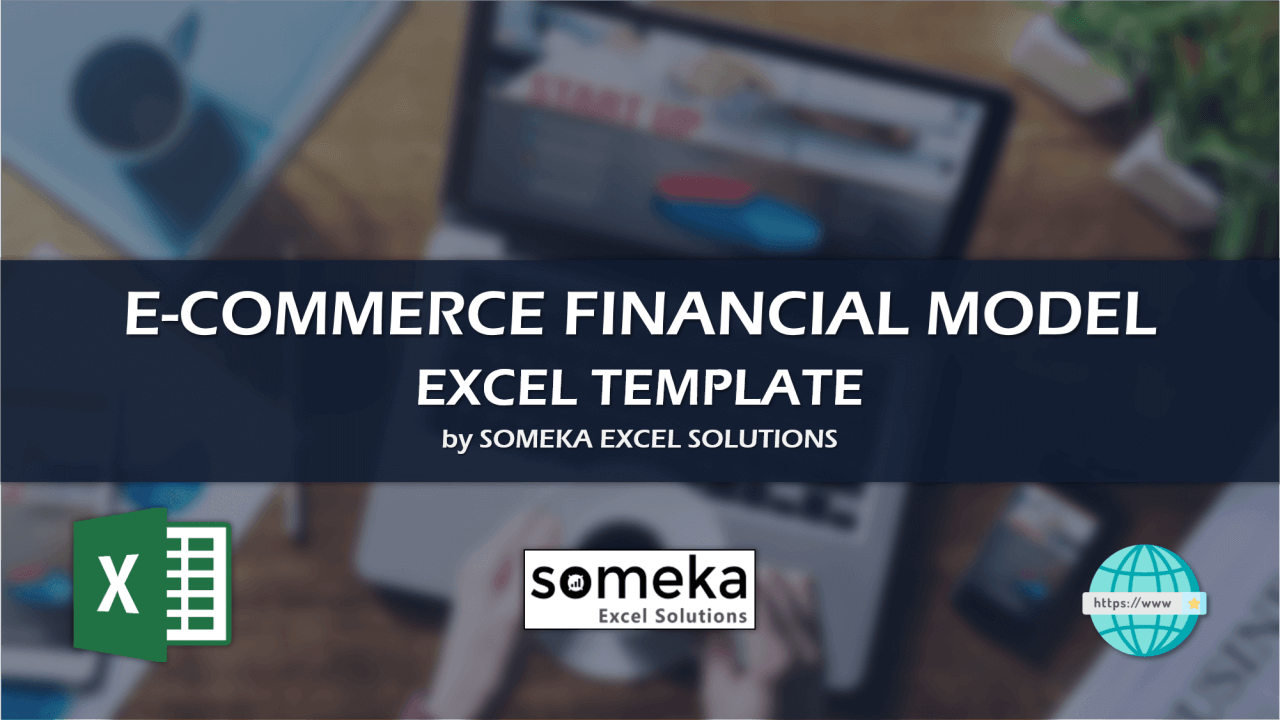
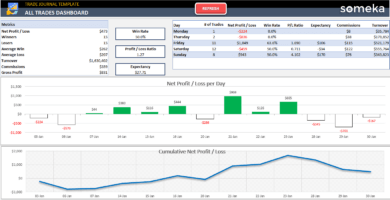
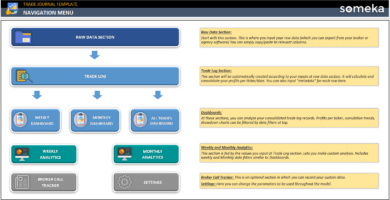
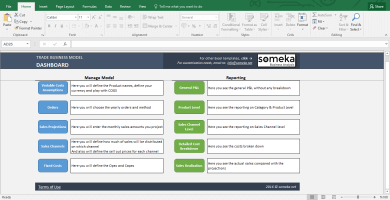
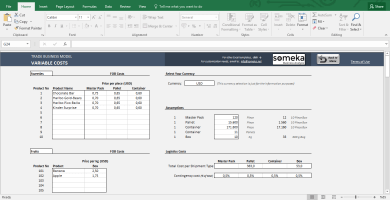
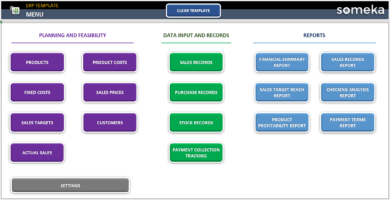
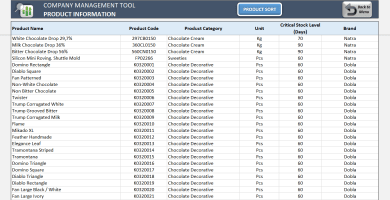
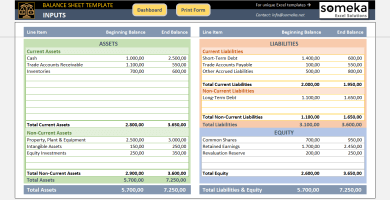
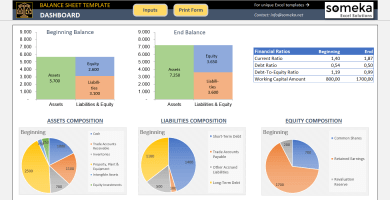
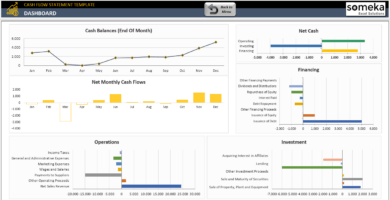
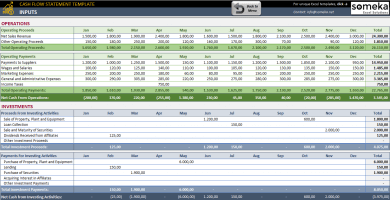
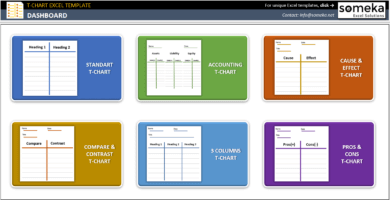
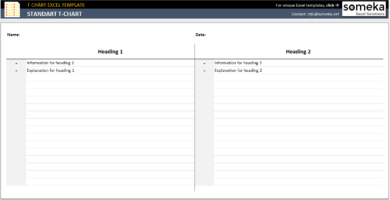
Alvin Rafilou –
Thanks for preparing a trial version, template works smoothly with nice design.
Mohemmed –
Hi Someka, I want to add my own logo to template, can u please help?
Someka –
Hello there, After you unlock the sheet, just right-click on the logo and select “Cut” and then add your own logo.
You can check this link for a more detailed guide.
Tina Mohebi –
I want to change the prices monthly, how I can do it?
Someka –
Hi, you can add or change when your prices change. Use price evaluation to change prices monthly, quarterly, or even annually.
If you have other questions, please contact us: at contact@someka.net
Liza –
Hello, can I use this in google sheets too?
Someka –
Hi Liza, for now, this template is just available for Excel and you can not use it on Google Sheets. But in a near feature, we will develop the Google Sheets version of this template too. We will keep you posted about the latest news too.
Octavio –
Awesome work. Congrats
I just have started my e-commerce startup and definitely needed this. Thanks guys!
Rosario Amarille Miranda –
Best
Pat –
It’s a very beautiful work. I work in finance ,and even I am blown away by the simplicity of this model. The web is getting wrapped by complex formulas and meaningless graphs. End of the day this is what a model should do.
Someka –
Hello Pat.
We’re so glad you liked the template. Sometimes people overcomplicate things and get distracted from the core concepts! Thanks for letting us know!
amina –
Hey, just wanted to say thank you for the material here and on youtube. Love that everything is step-by-step and more efficient than I read text book by myself. Very easy to follow!!